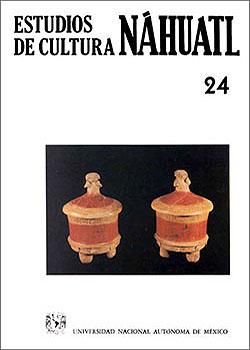
Fighting with femininity: gender and war in Aztec Mexico
Klein, Cecilia F. “Fighting with Femininity: Gender and War in Aztec Mexico”. Estudios de Cultura Náhuatl , n° 24 (1994): 171–217.
According to a historical manuseript written around 1580 by the Dominican friar Diego Durán, a fifteenth century ruler of Tlatelolco had ernployed a memorable strategy after being vigorously attacked by Tenochtitlan, the Aztec capital now buried beneath Mexico City. The Tlatelolcan king responded to his desperate circumstances by ordering some women and small boys to strip naked and attack the invaders. Another version of the same event adds that the naked women had their heads gaudily feathered and their lips painted red, the color of harlots. According to this author, the aggressive women carned shidds and obsidian bladed clubs while loudly accusing the Aztecs of being cowards. As the obscene contingent advanced other women -still dressed-turned around, flung up their skirts, and showed their buttocks to the enemy, whi1e others flung frorn the top oí a pyramid brooms, cane staves, weavíngs, warping frames, spindles and battens. How are we, then, to understand this curious episode in Aztec military mythohistory, an episode in which femininity takes the rhetorical form of a weapon? How did gender, in particular here female gender, function in Aztec verbal and visual discourse on warfare and conquest -and how did militarism function in the discourse on gender?

